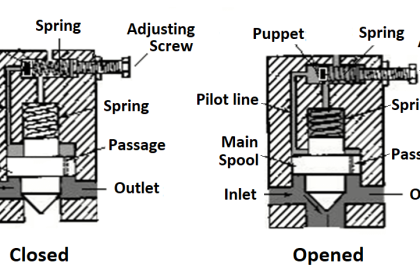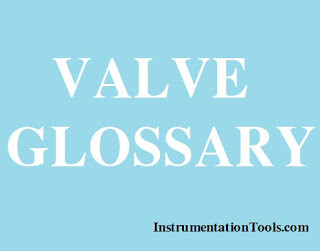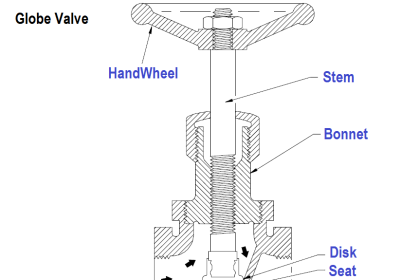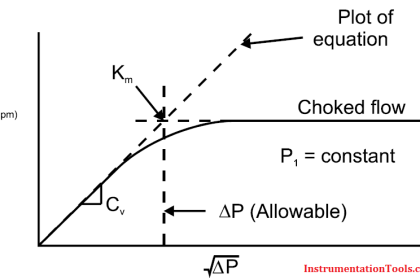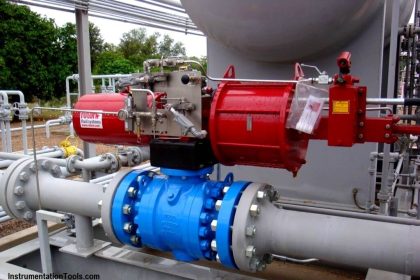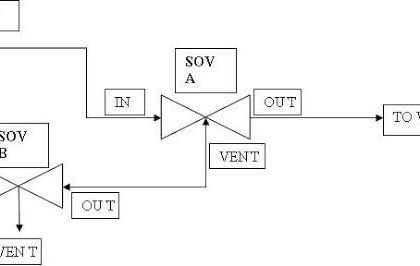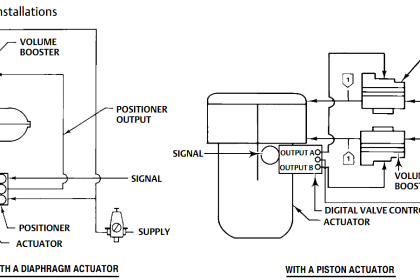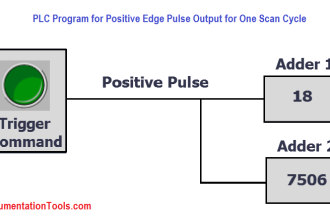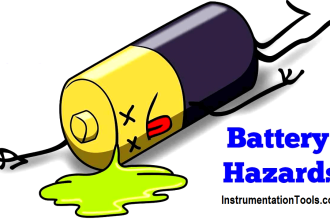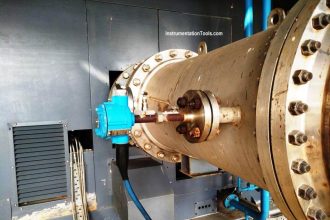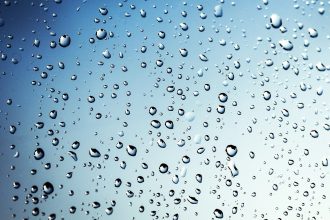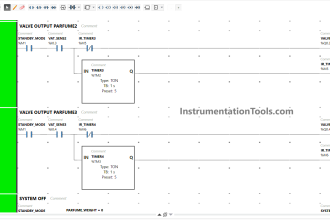Directional control valves control the flow direction, they vary significantly in physical characteristics and operation.
One among them is the poppet valve, in which the poppet is piston shaped or ball-shaped that moves the valve seat position open and close (ON or OFF).
Directional control valves may be classified according to the method of actuating the valve element.
A poppet-type valve usually hydraulically operated.
Poppet Valve
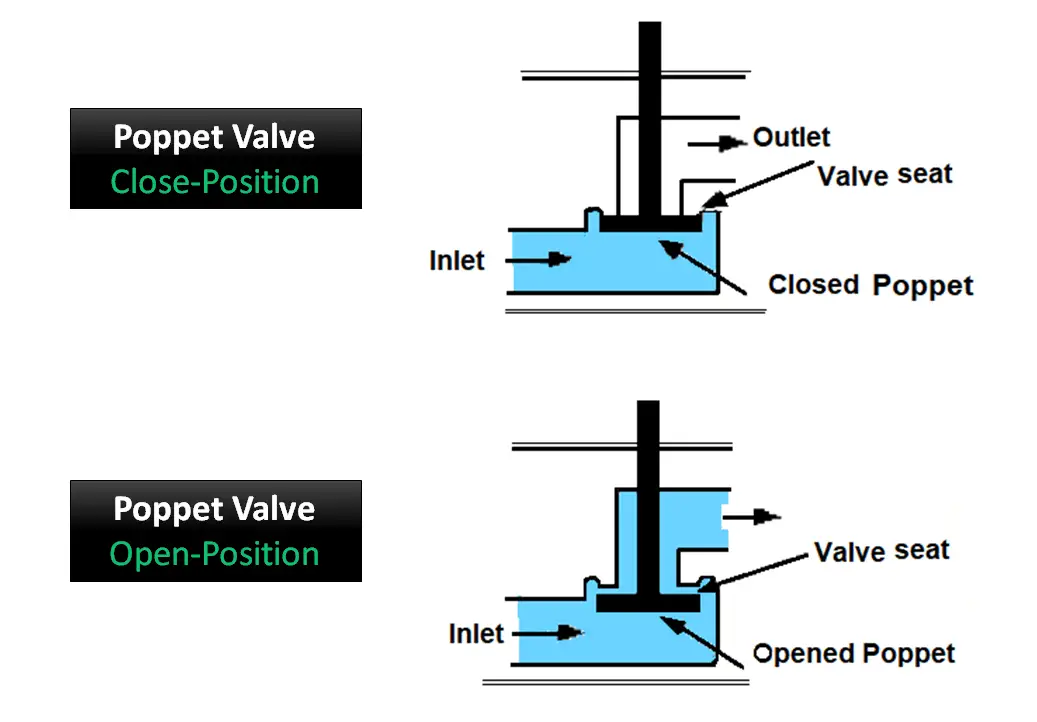
The poppet could also be a ball or simple discs, cones similar item like a plate used in conjunction with simple valve seats to control flow. They are made to sit over a specially constructed, finely machined, and polished seat.
Large capacity valves need large valve seat areas, resulting in large operating force.
The high pressure in hydraulic systems thus tends to present the use of simple poppet valves and they are, therefore, predominantly found in the low-pressure pneumatic systems.
Construction and Working
The above figure shows the simplified poppet valve. The basic construction of a poppet valve comprises a movable poppet that closes against a valve seat. Pressure from the inlet serves to hold the valve tightly closed.
A little force is required to the poppet stem that opens the poppet. The action is similar to the internal combustion of an automobile engine.
In certain applications, the poppet valves are operated by solenoids also, in which, poppet stem is actuated by energized solenoid coil.
The poppet stem usually has an O-ring seal, seated in a groove, and acts to stop fluid leakage. In some valves, the poppets are held in seated positions by springs. The number of poppets in a valve depends on the purpose of the valve used.
Thus the poppet valves have an intrinsic characteristic of fast response and they find application in control circuits.
Various Types of Poppet Valves
The following are the different types of poppet valves
- 2/2 Poppet Valve
- 3/2 Poppet Valve
- 4/2 Poppet Valve
2/2 Poppet Valve
The figure below shows the construction and symbol of a simple 2/2 normally closed valve.
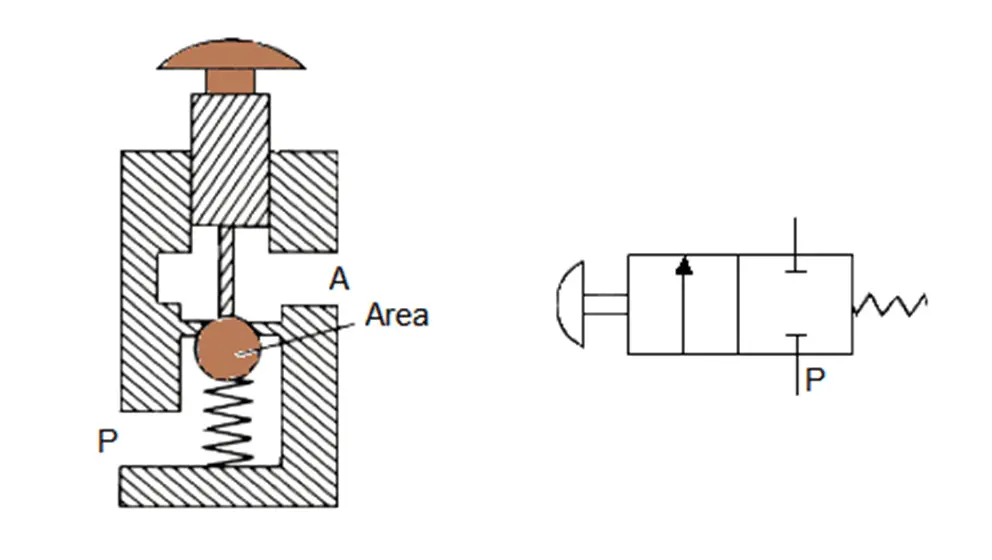
The release of the pushbutton lifts the ball off its seat and allows fluid to flow from port P to port A.
When the button is released, spring and fluid pressure force the ball upward again, closing the valve.
3/2 Poppet Valve
The figure below shows the construction and the symbol of a disc seal 3/2 poppet.

With the pushbutton released, ports A and R are first sealed, then the valve disc pushed downwards to open the valve and connect ports P and A.
Spring force and fluid pressure from port P close the valve.
4/2 Poppet Vave
The figure below is a poppet change over 4/2 valve using two stems and disc valves.
When the pushbutton released, A and R ports are linked via the hollow left-hand stem, and P and B ports are linked via the normally open right-hand disc valve.
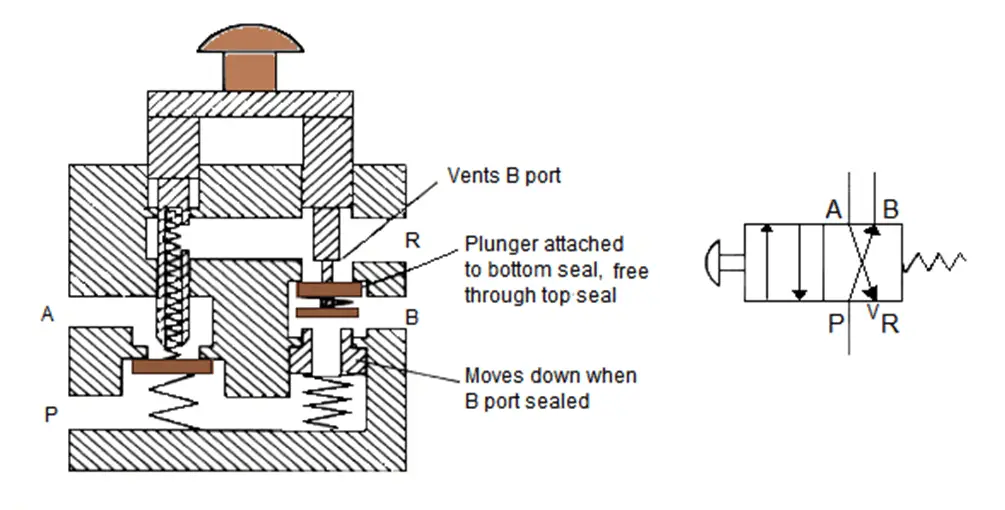
The moment when the pushbutton is pressed, the link between ports A and R is first closed, then the link between P and B closed.
The link between A and P is next opened, and finally, the link between B and R ports is opened. When the pushbutton is released, fluid and spring pressure put the valve back to its original state.
Advantages
- The manufacturing cost of the poppet-valve system is economical when compared to the other types.
- It can give larger values of valve-flow area to piston area than most the other types.
- The poppet valves are simple, inexpensive, and insensitive to dirt.
- They also have an extended working life as they have few parts which are subjected to wear and tear.
Disadvantages
- The main disadvantage of these valves is the high actuating force required to operate them.
- This high actuating force is required to overcome both the force of the built-in reset spring as well as the force exerted by the compressed air.
Reference: Hydraulics and Pneumatics, Technician’s and Engineer’s book handbook by Andrew Parr.
If you liked this article, then please subscribe to our YouTube Channel for Instrumentation, Electrical, PLC, and SCADA video tutorials.
You can also follow us on Facebook and Twitter to receive daily updates.
Read Next:
- Valve Commissioning
- What is a Pilot Valve?
- Types of Spool Valves
- What is an Unloading Valve?
- Types of Isolation Valves
